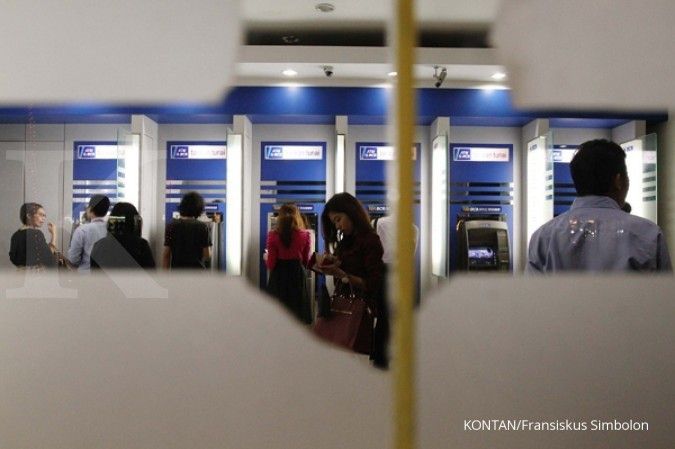JAKARTA. The country’s four largest banks in terms of asset size continued to post the highest net interest margin (NIM) ratio among their peers in the industry as of May, as suggested by the latest banking statistics.
Monthly statistics issued by the Financial Services Authority (OJK) showed that the average NIM ratio recorded by the banking heavyweights — Bank Mandiri, Bank Rakyat Indonesia (BRI), Bank Central Asia (BCA) and Bank Negara Indonesia (BNI) — revolved around 6.31 percent on average as of May.
The banks, which are listed in the BUKU IV category, meaning they have the largest core capital exceeding Rp 30 trillion (US$2.21 billion) each, were able to boost the NIM from 6.19 percent in April.
The higher NIM translated into higher net interest income as well, reaching Rp 60.69 trillion in May, which was 27.1 percent higher than the previous position in April.
These major banks eventually bagged Rp 28.72 trillion in net profits from their operations during the first five months of the year.
The OJK statistics actually came a month late because the banks published their first-half financial reports that already revealed results ending in June.
According to the banks’ own financial statements, Mandiri ended the first-half period with NIM standing at 5.58 percent. BRI, BCA and BNI were at 7.88 percent, 6.57 percent and 6.53 percent, respectively
When combined, their first-half net profits amounted to around Rp 32.42 trillion by the end of June.
Banks under the BUKU I category came in second in terms of NIM as their average NIM ratio hovered at 5.64 percent in May. There are 41 BUKU I lenders at the moment, excluding ones in sharia banking, and they are the smallest lenders in capital size with limited basic operations.
However, unlike the top four banks, the BUKU I lenders saw their NIM ratio fall by 6 basis points (bps) from the previous month.
Meanwhile, banks in the BUKU II category — whose core capital ranges from Rp 1 trillion to Rp 5 trillion — were listed in the third place as their average NIM ratio stood at 4.6 percent.
These 41 lenders posted slight declines as well in the ratio, down 2 bps from a month before.
BUKU III lenders — consisting of 20 banks with core capital between Rp 5 trillion and Rp 30 trillion — came in last with NIM at 4.44 percent in May.
According to the statistics, their average NIM ratio had continued to fall since March. Back then, the NIM stood at 4.52 percent then dropped to 4.46 percent in April.
Bank Danamon finance director Vera Eve Lim said she expected to see its NIM slightly improve throughout the second half, basing her conviction on better costs of funds’ structures.
By year-end, Danamon’s NIM is estimated to be 25 bps higher from the 7.07 percent reported in June. Danamon is currently listed as a BUKU III lender with Rp 25.57 trillion in core capital.
OCBC NISP president director Parwati Surjaudaja also predicted a better NIM in the second half, even though she said, “It will most likely be below last year’s position.”
OCBC NISP booked a NIM ratio of 4.15 percent in 2014 and 3.71 percent in the first half.
She attributed the lower NIM in the first six months of this year to relatively high time deposits within its funding portfolio, translating into higher costs for the bank amid slower credit disbursement.
Separately, BRI finance director Haru Koesmahargyo said that the state bank — still the most profitable of all banks — hoped to see its NIM inch even closer to 8 percent by year-end.
BRI, according to Haru, plans on reducing the amount of time deposits within its overall customer funding and boost its loan-to-deposit ratio to reach the expected NIM. (Tassia Sipahutar)










